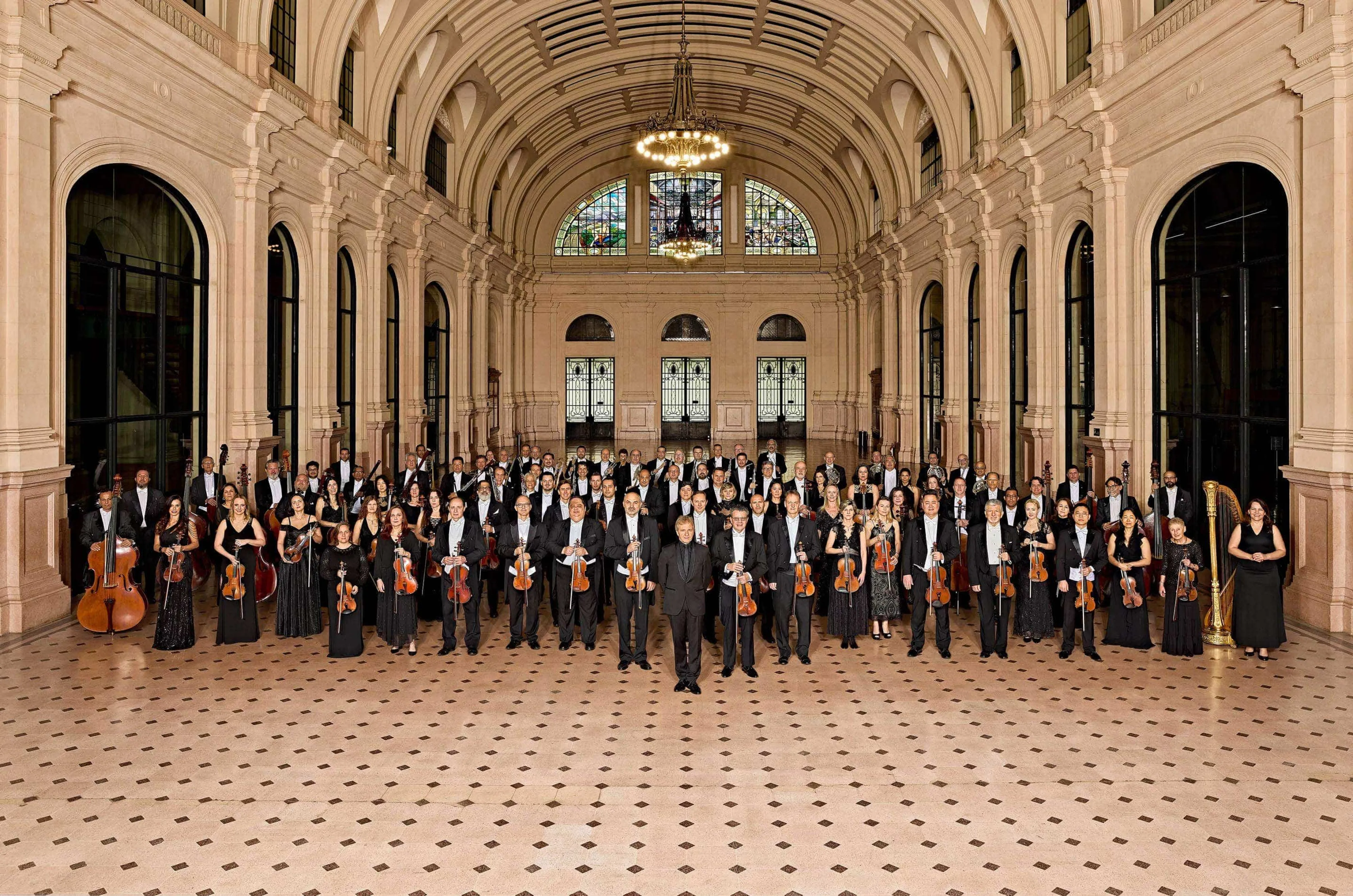
1953
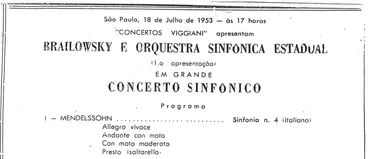
The beginning
The first concert of the State Symphony Orchestra (today’s São Paulo Symphony Orchestra — Osesp) took place on 18 July, under the baton of Souza Lima at Cultura Artística Theatre. The concert had Ukrainian-born French pianist Alexander Brailowsky as guest soloist.
1954
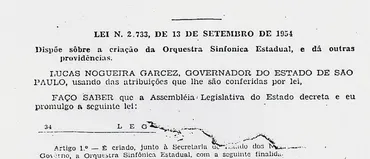
The State Symphony Orchestra is created
The official creation of the State Symphony Orchestra occurred with the promulgation of Act no. 2733 of 13 September 1954 by São Paulo Governor Dr Lucas Nogueira Garcez. The officialization of the orchestra coincided with the fourth centenary anniversary of the foundation of the city of São Paulo. Despite its official status, the orchestra rarely played between 1954 and 1963.
1964
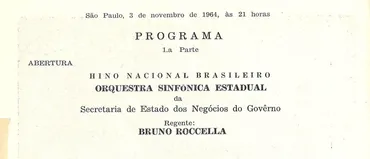
Osesp is back on stage with Bruno Roccella
Neapolitan conductor Bruno Roccella spearheaded a movement to return the State Symphony Orchestra to the stage, as it had been largely inoperative since its officialization. On 3 July the orchestra resumed its rehearsals, and on 22 July the group appeared on stage for the first time and began a new chapter.
1968
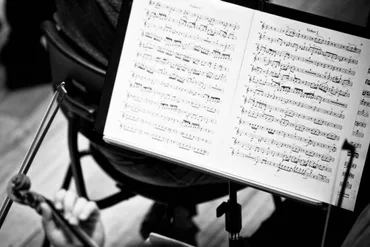
Another disruption
After having played about 60 concerts between July 1964 and November 1967, the musicians of the orchestra were informed in January 1968 that their activities were being suspended and they would be laid off.
1973
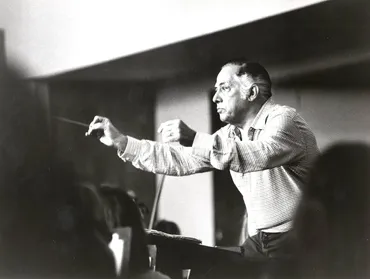
Leadership of Eleazar de Carvalho
After a period of silence for the orchestra, Governor Laudo Natel issued Decree no. 1326 of 22 March 1973, allowing the return of the orchestra, now under the leadership of great Brazilian conductor Eleazar de Carvalho, who had been the Chief Conductor of Brazilian Symphony Orchestra (OSB) from 1953 to 1968. Living in the US at the time, Eleazar had a resumé unmatched by any other Brazilian conductor. From 1951 to 1965, he taught conducting at Tanglewood Music Festival, succeeding legendary conductor Serge Koussevitzky, and between 1963 and 1968, he directed St. Louis Symphony Orchestra. In 1972, he took up the position of Chief Conductor of Pro Arte Symphony Orchestra, in the State of New York, after conducting some of the leading ensembles in the world, such as the Berlin, London, Los Angeles and New York philharmonic orchestras or Boston and Chicago symphony orchestras. In the first concert under the baton of Eleazar de Carvalho, the State Symphony, alongside choir Coral Paulistano, interpreted Hector Berlioz’s oratorio L'enfance du Christ [The Childhood of Christ], Op. 25.
1977
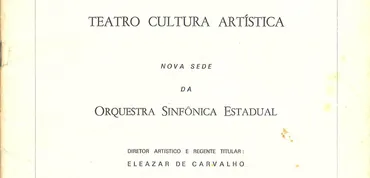
Cultura Artística Theatre: a temporary home
A high period of the orchestra began under the leadership of Eleazar de Carvalho. With Cultura Artística Theatre as its temporary home, the State Symphony launched its first concert series while playing extensively throughout the State of São Paulo.
1978

Osesp is born
The State Symphony Orchestra was renamed São Paulo Symphony Orchestra — Osesp — by Decree no. 11557 of 12 May 1978. In this same year, Osesp embarks on its first tour, playing around Brazil, an initiative that marked the beginning of a period of stability that would last until 1985, the year it left Cultura Artística Theatre.
1986

Rehearsals in the Copan-Cultura Hall
Osesp's rehearsals were transferred to Copan-Cultura Hall, the old cinema in Copan, one of the most emblematic buildings in the city of São Paulo, a symbol of modern Brazilian architecture designed by Oscar Niemeyer. This was the setting for one of the most challenging periods in the orchestra’s history.
1987
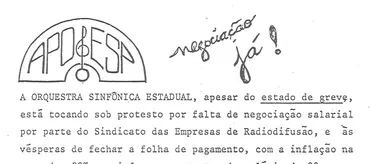
The foundation of Aposesp
In October, the Association of Professionals of São Paulo Symphony Orchestra (Aposesp) was created. Following Eleazar de Carvalho's death in 1996, the association rose to play a pivotal role in the restructuring of Osesp.
1989
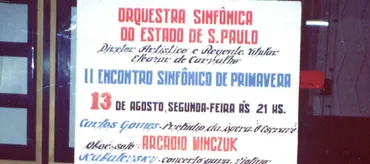
The Latin America Memorial
Osesp’s arduous search for a suitable venue for symphonic music led the orchestra to the Simón Bolívar Auditorium in the newly inaugurated Latin America Memorial, a cultural, political, educational, and leisure complex comprising several buildings.
1996
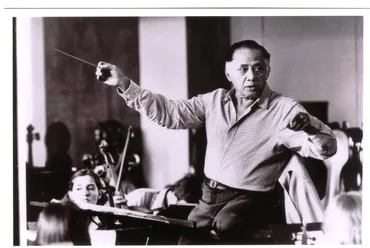
The death of Eleazar de Carvalho
Eleazar de Carvalho's death on 12 September concluded the 23-year period in which the conductor had directed the ensemble. Eleazar made a crucial contribution to the stabilization and consolidation of the orchestra as one of the most prominent musical institutions of Brazil. He left the seeds of a plan for a radical restructuring of the institution that would turn it into a musical powerhouse. Despite the instability that subsequently befell the orchestra, a conductor was soon appointed to lead Osesp into a new chapter, inspired by Eleazar’s dream. This achievement was only made possible through the unflagging efforts of Governor Mario Covas and his team.
1997
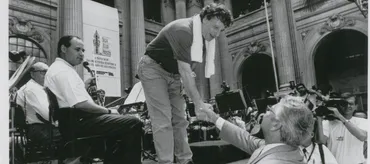
John Neschling and the new Osesp
Brazilian John Neschling was hired on 1 March as artistic consultant to implement Osesp's restructuring project. Alongside adjunct artistic director Roberto Minczuk, Neschling fought for the construction of Sala São Paulo, a concert hall specially designed for Osesp, for the improvement of the musicians’ working conditions, and for the hiring of new members through auditions in Brazil and abroad.
That year also witnessed the launch of Criadores do Brasil, which would later become Osesp Publishing House. Osesp Publishing House's catalogue now comprises more than 200 titles by over 60 composers, from first editions to revised works.
1998
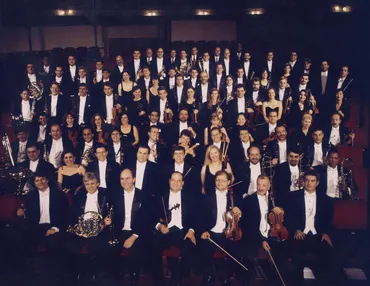
A step towards Osesp's permanent home
The newly renovated São Pedro Theatre temporarily hosted Osesp, while the orchestra awaited the completion of Sala São Paulo.
1999
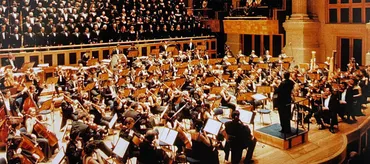
The inauguration of Sala São Paulo
Sala São Paulo was officially inaugurated on 21 April 1999. The inaugural concert, however, took place on 9 July, when Osesp, conducted by John Neschling, played Mahler's Second Symphony — the Resurrection. Among the authorities in the audience were Governor Mario Covas and Brazilian president Fernando Henrique Cardoso, who would later become the President of Osesp Foundation (now its Honorary President).
2000
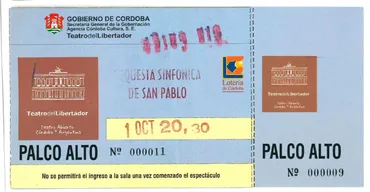
Choir, concert tours, recordings
The São Paulo State Symphonic Choir, founded in 1994 by Brazilian composer and conductor Aylton Escobar, was incorporated into Osesp and renamed the São Paulo Symphony Choir or simply the Osesp Choir. At the same time, a Children's choir was created with boys and girls aged from 8 to 15 years old.
In September and October, Osesp embarked on its first international concert tour. Conducted by John Neschling and Roberto Minczuk, the group toured in Lima, Peru, and in four cities in Argentina, playing for the first time in the historical Colón Theatre in Buenos Aires on 30 September.
The year ended with Swedish label BIS and Osesp entering a contract for the recording and marketing of the orchestra’s first albums, almost entirely devoted to Brazilian music. The collaboration yielded the release of 19 albums in five years.
2001

Educational outreach programmes and international accolades
Osesp's launched its first educational outreach programmes aimed at developing the relationship between the orchestra and its community. One of the initial actions involved Osesp's musicians giving thematic talks and facilitating workshops at public schools.
In Oslo, Norway, Sala São Paulo was awarded the International Real Estate Federation's Prix d’Excellence for the best public project in the world.
2002
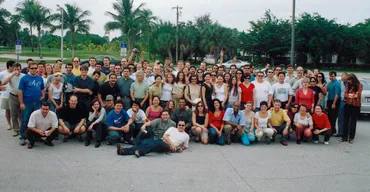
First tour in the Unites States of America
In its first tour in the US, Osesp played over 20 concerts in 18 different American cities. Conducted by John Neschling and Roberto Minczuk, the group performed alongside guitarists Odair and Sérgio Assad — the legendary Duo Assad — and Banda Mantiqueira, in Costa Mesa and Ann Arbor. In the most anticipated concert of the tour, at the Avery Fisher Hall, Lincoln Center, in New York, the orchestra was given a standing ovation.
2004
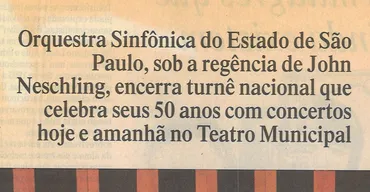
Brazilian tour
The orchestra celebrated its 50th anniversary with its first large-scale Brazilian tour after its restructuring. Over 24 days, the orchestra played three different programmes in 14 Brazilian state capitals. In the last two concerts of the tour, on the 13 and 14 November, Osesp performed Mahler's Ninth Symphony to sold-out audiences in the Municipal Theatre of Rio de Janeiro.
In this same year, Osesp Youth Choir was created, recruiting young people aged between 14 and 17 years old.
2005
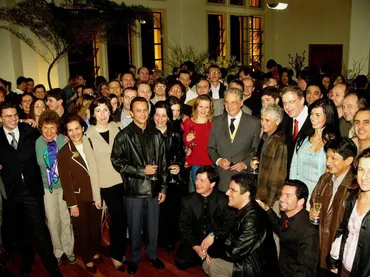
The launch of Osesp Foundation
São Paulo Symphony Orchestra Foundation, or simply Osesp Foundation, was created with former Brazilian president Fernando Henrique Cardoso as the president of its executive board. Implementing groundbreaking and rigorous management standards, Osesp Foundation became a role model in the Brazilian cultural sector. In addition to Fernando Henrique Cardoso, the team that spearheaded this transformation included Alberto Dines, Carlos Rauscher, Horácio Lafer Piva, John Neschling, José Ermirio de Moraes Neto, Luiz Schwarcz, Marcelo Lopes, Pedro Malan, Pedro Moreira Salles, Pérsio Arida, and Rubens Barbosa.
The educational programme Discover the Orchestra was launched with great acclaim. Contributing to audience development, it allowed students from public schools and social projects to attend open rehearsals and lecture-concerts. The programme also encompassed formative activities for teachers, from workshops to preparatory courses and digital teaching resources. Since its inception, the programme has reached over 9000 children and young people and has trained 12000 teachers.
2006
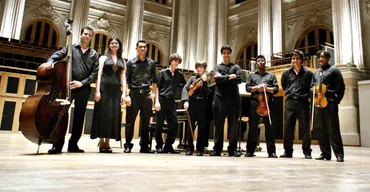
Music Academy
Osesp Music Academy was established to train young musicians for a professional career in orchestras. At the same time, Sala São Paulo began offering guided visits focused on the historical, architectural, and musical aspects of the building. The Matinais, a series of free matinee concerts on Sunday mornings at Sala São Paulo, also began in 2006.
2007
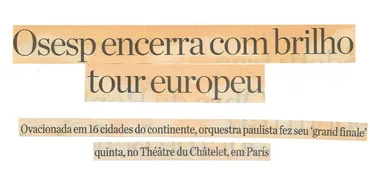
Europe tour and a Latin Grammy
Osesp embarked on a European tour to celebrate John Neschling’s 10th anniversary as Chief Conductor and Artistic Director. In Europe, Osesp gave 16 concerts in eight different countries, playing in some of the most prestigious halls in the world, such as Barcelona’s Palau de la Música Catalana, Zurich’s Tonhalle, Cologne’s Philharmonie, Paris’ Théâtre du Châtelet, and the legendary Musikverein, in Vienna.
Osesp's album Beethoven: Abertura a Consagração da Casa e Sinfonia nº 6 em Fá maior (Biscoito Fino, 2007), conducted by John Neschling, won Best Classical Album in the 8th Annual Latin Grammy Awards.
2008
Itinerant Osesp
The Itinerant Osesp project was launched, offering free concerts, workshops, and music appreciation courses throughout the State of São Paulo. With over 325 concerts to date, the project has become a reference in terms of the promotion and democratization of symphonic music.
In an article published in December by specialist magazine Gramophone, Osesp is named among the three up-and-coming orchestras in the international concert music scene.
2009
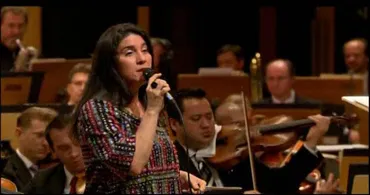
New Year’s concert
Following a tradition among prominent orchestras, Osesp, conducted by John Neschling, played two upbeat New Year's Concerts on 31 December 2008 and 1 January 2009. The first of these concerts was recorded by the French-German TV channel Arte, which also broadcast the second concert to 14 European countries. The second concert was also broadcast in Brazil by TV Cultura. Performing alongside Osesp were singer Mônica Salmaso and Banda Mantiqueira, an instrumental group led by saxophonist and clarinetist Nailor Proveta.
2010
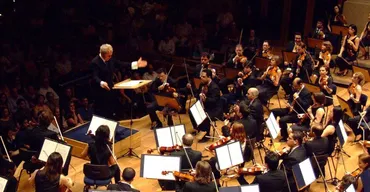
Yan Pascal Tortelier e Arthur Nestrovski
French conductor Yan Pascal Tortelier was appointed as Osesp's new Chief Conductor and Arthur Nestrovski became its new Artistic Director. Under the baton of Tortelier, Osesp toured Europe for the third time, playing 12 concerts around Austria, Croatia, Germany, Poland, Slovenia, and Spain.
2011
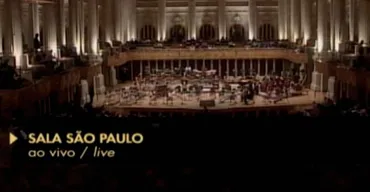
First live broadcasting
For the first time, a concert by Osesp was broadcast live. Conducted by Marin Alsop, the orchestra performed Sergei Prokofiev's Fifth Symphony and Erich Korngold's Violin Concert in D major, with Renaud Capuçon as guest soloist.
2012
Marin Alsop
American conductor Marin Alsop was appointed as Osesp's new Chief Conductor, with Celso Antunes as Associate Conductor between 2012 and 2016. In August, Marin led the ensemble in their fourth, highly memorable European tour. The first concert of the circuit, on 15 August 2012, made history when Osesp played for the first time in the BBC Proms for an audience of around 6000 people. After playing in Aldeburgh, England, the orchestra performed at the Rheingau Musik Festival, one of Germany’s most prestigious summer festivals, before ending the tour at the Concertgebouw, Amsterdam, a historic venue known for having some of the most perfect acoustics in the world.
Following its European tour, Osesp was named by The Guardian and BBC Radio 3 as one of the leading orchestras on the international stage. It also featured in The Times and, once again, in specialist magazine Gramophone.
Osesp announced two major projects in partnership with label Naxos: a recording of the complete symphonies of Sergei Prokofiev, under the baton of Marin Alsop, and a recording of the complete symphonies of Heitor Villa-Lobos, conducted by Isaac Karabtchevsky, a project that was awarded the Great Prize of Revista Concerto in 2018.
2013
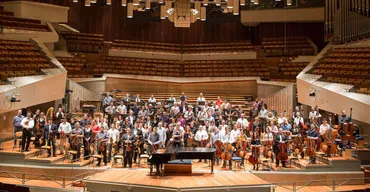
The great European tour
In 2013, Marin Alsop also became Osesp's Musical Director, leading the group in its fifth European tour, which comprised concerts in 13 cities in 6 different countries — Austria, England, France, Germany, Ireland, and Switzerland. With renowned Brazilian pianist Nelson Freire as soloist and accompanying vocal group Swingle Singers, Osesp made its début in historic theatres such as the Salle Pleyel in Paris, the Royal Festival Hall in London, and the Berliner Philharmonie. In response to the tour, specialist magazine Diapason hailed the orchestra as the 'Symphonic glory of Latin American'.
The Music Academy of Osesp expanded with the foundation of the Academic Choir. Osesp Digital Label was launched, releasing several albums by Osesp for free for both streaming and download.
2014

Celebratory tour in Brazil
To celebrate its 60th anniversary, Osesp again toured Brazil, playing under the baton of Marin Alsop in five different state capitals of Brazil: Salvador, Rio de Janeiro, Belo Horizonte, Porto Alegre, and Curitiba. The first issue of Revista Osesp was published.
2015
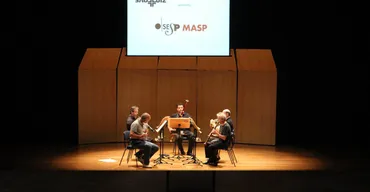
Osesp Masp and other projects
Osesp initiated two important projects: Osesp Masp, a chamber music concert series in collaboration with the Museum of Art of São Paulo (Masp), and SP–LX — New Contemporary Music from Brazil and Portugal. In partnership with Gulbenkian Foundation, the SP–LX commissioned and premiered new symphonic works. Among the composers involved in the project were Brazilians Aylton Escobar, Celso Loureiro Chaves, João Guilherme Ripper, and Marlos Nobre, and Andreia Pinto-Correia, Luís Tinoco, Nuno da Rocha and Vasco Mendonça from Portugal.
2016
European summer festivals
In August, Osesp played at three of Europe’s largest summer music festivals: Edinburgh International Festival, in Scotland, Lucern Festival, in Switzerland, and the BBC Proms, in England. Venezuelan pianist and composer Gabriela Montero toured as soloists along with the ensemble, which also played alongside 17 musicians from Brazil Jazz Symphony in the Late Night Prom.
Osesp Music Academy began offering a degree in Conducting.
2017
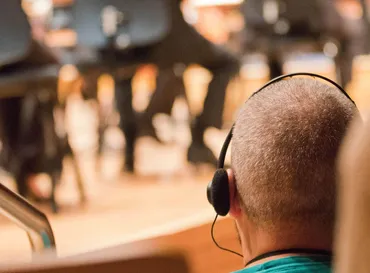
Accessibility
Osesp implemented accessibility features for people with visual or hearing impairments in some of its concerts.
2018
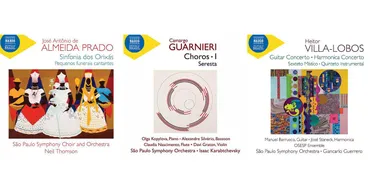
Naxos
Osesp began recording Brazilian music for the series The Music of Brazil, which is part of the project Brasil em Concerto developed by the Brazilian Ministry of Foreign Affairs in partnership with Naxos and the philharmonic orchestras of Minas Gerais and Goiás. These albums were major contributions to the collection of over 120 titles released by Osesp in the period up to 2024.
2019
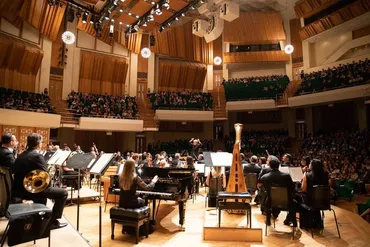
Chinese tour and “All Together: A Global Ode to Joy”
In February, Osesp made history by becoming the first professional Latin American orchestra to tour China. Conducted by Marin Alsop and with Chinese violinist Ning Feng as guest soloist, the orchestra played in Shanghai, Jinan, Beijing, and Hong Kong.
In the last concert of the season, which was also Marin Alsop's farewell concert, Osesp made its debut in the project “All Together: A Global Ode to Joy”, in partnership with Carnegie Hall. The orchestra performed Beethoven’s famous Ninth Symphony, sung in Portuguese for the first time in a translation by Arthur Nestrovski.
2020
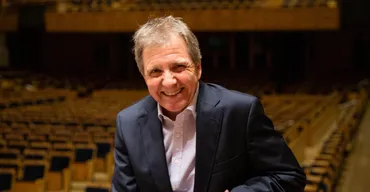
Thierry Fischer
Swiss conductor Thierry Fischer was appointed as Osesp's Chief Conductor and Musical Director. Marin Alsop became its Honorary Conductor.
During the pandemic, Osesp started live-streaming its symphonic, choir, and chamber music concerts on YouTube. From 1 August to 18 December, almost 30 concerts and educational live-streamings were offered to audiences as small musical gestures of hope and relief in a period brimming with uncertainty and pain.
2022
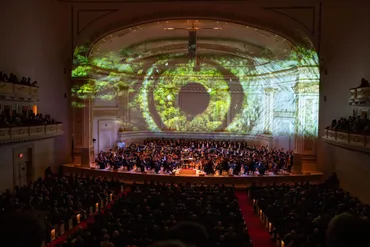
Debut at Carnegie Hall
Performing under the baton of Marin Alsop, its Honorary Conductor, Osesp made its debut at the mythic Carnegie Hall on 14 and 15 October. Two different programmes were featured: a selection of Brazilian and Russian music, and the multimedia event “The Amazon Concert: Sights and Sounds of Brazil”, which combined 75 minutes of uninterrupted Brazilian music with video art by Marcello Dantas depicting the riches of Brazilian flora and fauna.
2023
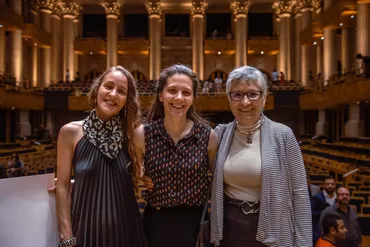
Concurso Compositoras Latino-Americanas
Ampliando sua tarefa de registro, expansão e difusão da música brasileira e latino-americana e valorizando sua vocação para transformar a cena musical, a Osesp lança a primeira edição do Concurso Compositoras Latino-Americanas, cujo concerto de premiação ocorreu no dia 22 de fevereiro de 2024.
A Academia de Música da Osesp cria o curso de redação e crítica musical.
2024
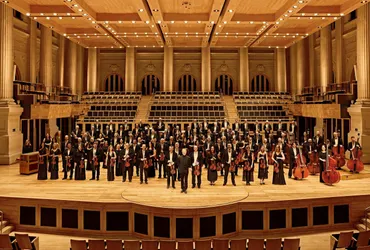
Osesp’s 70th anniversary
On September 13, the Orchestra celebrates its anniversary with a commemorative concert conducted by Thierry Fischer. The program features works beloved by audiences, at times highlighting specific instrument families — such as the “Adagietto” from Mahler’s Fifth Symphony, for strings — and at others showcasing the full orchestral power, as in “The Little Train of the Caipira,” from Villa-Lobos’s Bachianas Brasileiras No. 2. Together, all the pieces form a 70-minute arc of uninterrupted music, taking the audience on a journey through the Orchestra’s history.
2024
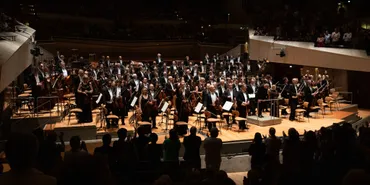
Return to the Berlin Philharmonie
From August 17 to 24, Osesp embarks on its seventh European tour, with five concerts across four countries in the Old World: the Santander International Festival (Spain), Edinburgh International Festival (Scotland), SummerConcerts Festival (Netherlands), Rheingau Musik Festival (Germany), and, as a grand finale, the opening of Musikfest Berlin at the iconic Philharmonie. Under the baton of Thierry Fischer and with violinists Roman Simovic and Daniel Lozakovich alternating as soloists, the Orchestra presents four distinct programs featuring works by Camargo Guarnieri, Villa-Lobos, Richard Strauss, Alberto Ginastera, Camille Saint-Saëns, Charles Ives, and Johannes Brahms. In Berlin, the program includes Edgar Varèse’s Amériques, specially chosen to honor the Festival’s theme: the Americas.
2025
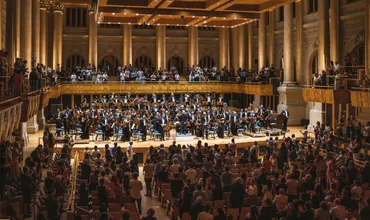
Lançamento de livro comemorativo
A Osesp lança livro comemorativo de seus 70 anos, com uma retrospectiva de suas sete décadas de música. A publicação representa o desejo de resgatar as muitas histórias – pessoas e coletivas – que transformaram a Osesp em símbolo da cultura brasileira. O livro está disponível gratuitamente em português, bilíngue e audiolivro.